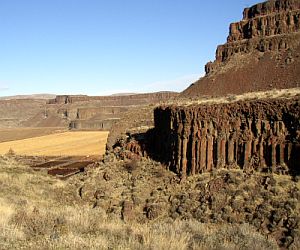What do you understand by Large Igneous Province / Flood Basalt?
Civil Services Main Examination
General Studies (Paper - 1) : Model Question & Answers
 Question:
What do you understand by Large Igneous Province / Flood Basalt? Explain the
formation process with example from India’s geology.
Question:
What do you understand by Large Igneous Province / Flood Basalt? Explain the
formation process with example from India’s geology.
Answer: Large igneous provinces (LIPs) are defined as voluminous emplacements of predominantly mafic extrusive and intrusive rock. Many geologists believe that almost all LIPs were created at hot spots/fissure eruptions by mantle plumes. According to this hypothesis, a large, turbulent blob of hot material – a “plume head” - leads the way. When this plume head reaches the top of the mantle, it generates a huge quantity of magma by melting, which erupts in massive flood basalts.
These flood basalts are on continents as well as in the ocean basins, for eg;
(a) Columbia River Plateau and Deccan Trap in India (Continent) and
(b) Ontong-Java plateau and Kerguelen Plateau (Ocean)
The Deccan Trap: From the end of the Cretaceous (65 million years ago) till the beginning of the Eocene (57 million years ago), stupendous volcanic outburst overwhelmed a vast area of the Peninsular India. A vast area of about 10 lakh sq. km. was flooded by the out pouring of extremely mobile basalt lava from fissures and cracks covering fully the pre-existing topography.
These volcanic deposits have flat top and steep sides so that they appear as gigantic steps (the word ‘trap’ in Swedish means a ‘step’). It is estimated that the molten rock of the order of 6.5 million cubic meters, exceeding the bulk of the entire Himalaya, was poured out from the interior of the earth to form this volcanic plateau over 1800 mt. in height. The Deccan Trap forms the north-west portion of the Deccan Plateau. The vulcanism is supposed to be the result of the Reunion hotspot.
data-matched-content-ui-type="image_card_stacked"
Useful Tips & Articles
तैयारी कैसे करें? |
EXAM SUBJECTS |
STUDY RESOURCESDownload Free eBooks |


